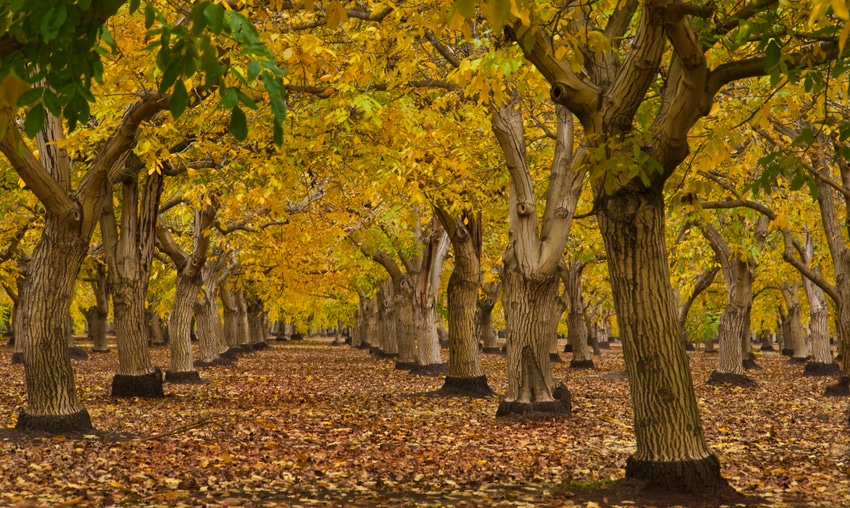
Increased planting of potted walnut trees and improved handling methods have reduced the incidence of crown gall disease in English walnut trees. Yet grower preference for varieties on Paradox hybrid rootstock, which is highly susceptible, keeps this disease on the radar screen.
Crown gall is caused by the bacteria Agrobacterium tumefaciens which survives in the soil and in gall tissue. The bacteria enter the tree through wounds, developing as rough or abnormal galls at or below the soil surface on the roots or trunk.
Galls have soft, disorganized tissue which lack the tree rings found in healthy wood or callus. The disease can stunt younger and older trees, and cause secondary wood rots.
Rick Buchner, University of California Cooperative Extension Tehama County orchard farm advisor and office director, believes crown gall infection is declining in walnut trees compared to the higher levels found seven to eight years ago.
Crown gall in young trees can be difficult to see before growth appears above the ground. Early infection symptoms can include stunted tree appearance, excessive ground cracking around the trunk, ground “heaving” around trunk, poor tree leaf color, or early fall coloration.
If these signs are observed, the recommendation is to expose the crown of the tree and examine it for galls. Crown gall is most damaging to trees one-to-eight-years old. Paradox rootstock is especially susceptible to the disease.
Buchner says the best course of action is to treat galls in second or older leaf trees and to continue treatment if galls reappear. Once trees are mature, treatment can be discontinued.
Successfully treated trees can reach equal size and productivity compared to trees without galls.
The optimum time for gall removal and treatment is during the growing season when the tree can heal faster. The action to remove galls from smaller trees may be extensive and can impact nutrient uptake. For this reason, it may be more economical to replace the tree rather than treat it.
Most gall infections begin below the soil. Digging down to expose galls is time consuming. As the galls grow and develop inside major roots, eradication becomes more difficult.
Growers who find crown gall infections and choose to remove them are reportedly finding successful with surgical removal and then painting the site with the bacteriacide Gallex. Heat treatment is another option.
The advantage of surgery and chemical treatment is the process is proven effective when conducted properly.
Disadvantages include the expense, the slower process, and the need for complete disinfection of the tools used. The heat treatment may be slightly faster with fewer tools involved, and control is equal to a chemical treatment.
Buchner warns that there are no studies on the long-term impact of heat treatment.
He says both methods work equally in field conditions, but are not proven 100 percent effective. Surgery is time consuming and requires considerable precision. With a heat treatment, the amount of heat needed to kill cells and the bacteria is unknown.
Gall removal surgery and chemical treatment include tool use to remove the gall along with one to two inches of bark around the gall margin. When all of the gall tissue is removed, the bacteriacide can be applied.
With heat treatment, some gall removal is required before heating the area with a torch. Treated trees should be marked and monitored for gall regrowth.
Treatment is most effective for small galls on young trees. However, the procedure can be expensive and difficult to perform, depending on the gall size and location. If trees less than four years old are severely affected with galls, it may be more economical to remove the trees and replant.
If galls develop on trees after seven or eight years of age and the trees appear otherwise healthy, treatment is probably not necessary. For trees four-to-seven-years old, the decision whether to treat galls or remove trees depends on the severity of galling and the treatment cost compared to tree replacement.
About the Author(s)
You May Also Like




